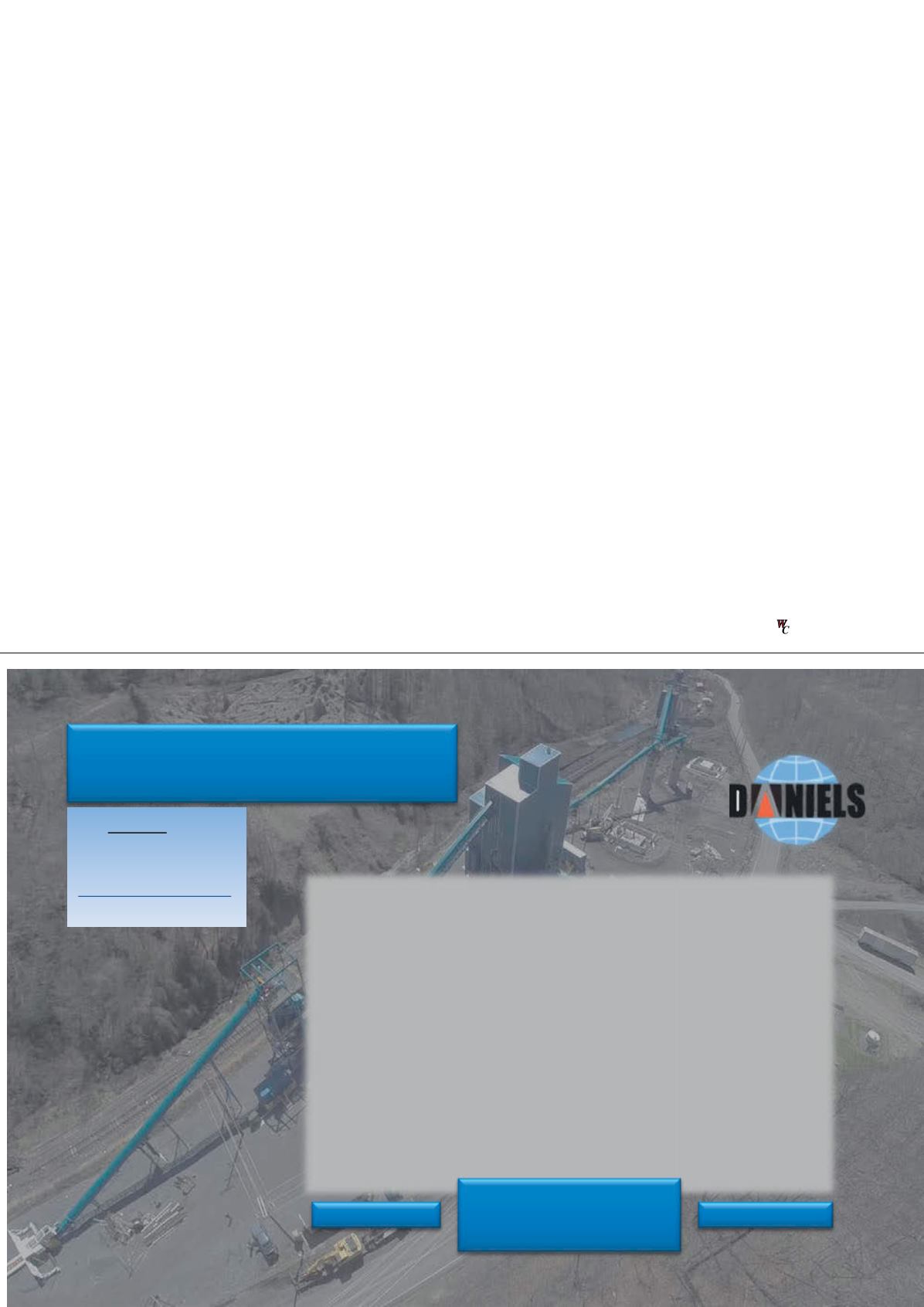
cyclone underflow reporting to the
spiral circuit. This is due to a high
concentration of solids in the feed to
classifying cyclones. The presence of
these solids results in the following:
n
Overloading of spirals resulting
in reduced efficiency. According
to Table 6, 1 x 0.15 mm
(1 mm x 100 m) spiral refuse
has 10.73% of material with a
low ash of 17.59%. At the same
time, this size clean coal product
ash is 3.77%, which is below
the specifications. This means
overloading of the spirals is
resulting in the loss of clean coal
into the refuse.
n
Increase in spiral product ash
(19.15% of solids below 0.15 mm
at 37.31% ash shown in Table 5).
The selection of equipment to
dewater spiral product needs careful
consideration. It includes the
following choices:
n
Single stage sieve bends.
n
Two stage sieve bends.
n
Classifying cyclone – sieve bend
combination.
n
Derrick StackSizer.
Final selection of the equipment to
dewater spiral product depends upon
the level of its contamination with high
ash ultrafine material. The Derrick
StackSizer does the most efficient job
– but it is an expensive choice. In some
cases, this is the best option (Table 8).
In others, properly designed two stage
sieve bends and/or a combination of
classifying cyclone/sieve bend will
work with satisfactory results.
Solids in the effluent from
StackSizers have ultrafine fine
material with ash high enough that
it can either become part of a
thickener or froth flotation cell feed.
Effluent from two stage sieve
bends or from the sieve bend
handling clean coal cyclone
underflow cannot be sent to the
thickener or to froth flotation cells. In
both cases, it contains +0.15 mm low
ash coal, which is lost either directly
to the thickener or in the froth cell
tailings as shown in Table 7. This
effluent needs to be recirculated back
to the classifying cyclone circuit.
Conclusion
To sum up, efficient sizing and
classifying functions in a coal
preparation plant are extremely
important. Inefficiencies in the
performance of these tasks result in
overloading of circuits, reducing
process efficiencies, with adverse
impact on clean quality and yield. It
is imperative that the original plant
design and its operation and
maintenance take this into
consideration. There should be a
thorough periodic review of sizing
and classifying circuits especially
when there is a change in raw coal
feed characteristics. The same is true
when a preparation plant is
operated exceeding the design
capacity on a regular basis. Capital
required to fix the problems is
normally a fraction of revenues from
additional clean coal yield.
The DANIELS Company
(a member of GT Global)
Let The DANIELS Company Maximize your
Clean Coal Recovery and Profits
●
EPC Turnkey Coal Preparation Plant (CPP) Project Contract
●
EPC Turnkey Coal Storage and Handling Plants (CHP)
●
Coal Preparation Plant Retrofitting
●
Coal Preparation Plant Design and Engineering
●
Contract Operation of CPP and CHP
●
Upgrades to existing plants to increase capacity or efficiency
●
Full line coal preparation equipment supply
●
Full line coal storage and handling facility equipment supply
●
Coal Process Technology R&D, Consulting and Services
●
Coal Preparation Plant Performance Audit for Management
●
Feasibility Study of CPP and CHP Projects
(F): 1-304-327-5118
238 Markell Drive
Bluefield WV 24701
Contact
Robert W. Hollis
VP of Marketing
1-606-224-4733
(P): 1-304-327-8161


